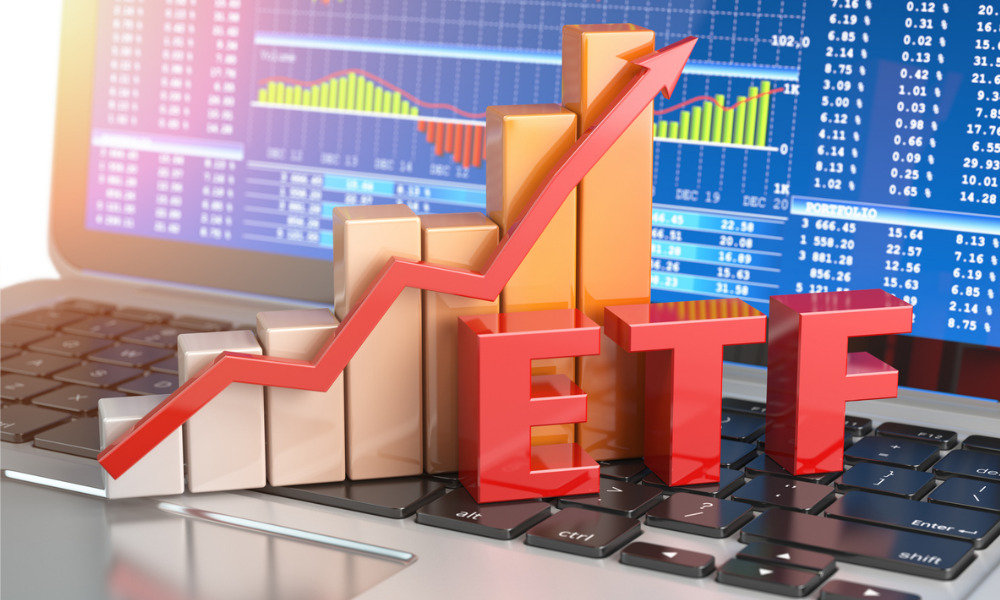Share of stock market transactions reaches new high

Concerns have been raised regarding exchange traded funds' supposedly inexorable expansion as their percentage of US stock market transactions reached a new high of 30.7% last year, up more than a fifth from their share of 25.3% in 2021.
ETFs are increasingly being used as shorter-term trading vehicles by participants wishing to swiftly modify their market exposure, according to the Investment Company Institute's most recent study. The ICI's Shelly Antoniewicz, senior director of industry and financial analysis, cited "elevated market volatility" as the cause of the larger proportion of turnover in the previous year.
“During periods of market turbulence, ETF secondary market trading [of ETF shares] volumes rise — both in absolute terms and as a share of total stock market trading — as investors, especially institutional investors, turn to ETFs to quickly and efficiently transfer and hedge risks,” she said.
The addition of daily option expirations on the S&P 500 index last year, according to Rabih Moussawi, an associate professor of finance at Villanova School of Business, may be to blame for the rise in ETF trading. This resulted in "skyrocketing" volumes for zero-day-to-expiration options and "ramping up" of ETF trading by options market makers, who normally employ ETFs to hedge their options holdings.
“Given that ETFs are shown to increase the volatility of underlying stocks, this could suggest an increasing effect of ETFs on market volatility due to 0DTE options trading,” Moussawi added.
According to co-author of a 2022 academic article, Valentin Haddad, passive investment alters price signals and raises the volatility of the US stock market. Additionally, he thinks that investors are trading on macroeconomic news, which ETFs are particularly well-suited for, and that this is indicative of the shift away from using ETFs as long-term portfolio building blocks.
“If anything, it just confirms that the view that ETFs are simply an instrument for passive trading is not accurate; market participants use them very dynamically,” he added.
Trading volumes for US ETFs increased by 22.5% year over year to a record $44.1 trillion, but the turnover percentage stayed constant at 25% to 27%. Assets for US-listed ETFs increased from $992 billion in 2010 to $7.2 trillion at the close of 2021 before falling to $6.5 trillion at the end of the previous year. The assets of US-listed ETFs have grown dramatically, from $992 billion in 2010 to $7.2 trillion at the end of 2021, as a result of the market's rapid expansion.
Even when the market crashed and a record $1.1 trillion was withheld from US-domiciled mutual funds, investors poured $609 billion into US-listed ETFs last year. On June 13, the day before the Federal Reserve rate-setting meeting, ETF trading volume reached a peak of 39% of stock market turnover, according to ICI statistics. Even during periods of relatively low volatility, ETFs are becoming more and more significant; in 2022, their market share never dropped below 21% on any trading day, setting a new record that was substantially higher than the floor of 14% that was seen in 2021.
Even with the volatility in the first few months of 2023, ETFs have continued to make up 30% of trading volumes. In contrast to primary market activity, which accounted for 14% of ETF trading last year, supporters claim that secondary market activity made up 86% of ETF trade. This is because 14% of ETF trading last year came from the primary market, while 86% of trade came from the secondary market.
Primary market trading in domestic US stock ETFs was $5.2 trillion in 2018, an increase from 4.6% in 2021. According to the ICI, this low proportion indicated that trading had little effect on the underlying shares.
However, the fact that most ETFs are passive, index-tracking funds raises questions about the increased share of trading that they account for. Ninety-four percent of US ETFs were managed passively at the end of the first quarter of this year.
However, Antoniewicz brushed off any worries, stating that there are several types of passive investment. The choosing of an index was an "active decision," she added, adding there were "a wide range of different securities, asset classes, and tactical investment positions."
ETFs' increasing popularity did not concern Bryan Armour, director of North American research for passive strategies at Morningstar.
“ETFs and their underlying securities are looked at in tandem by market makers and traders. One cannot survive without the other, so I think it’s nearly impossible for ETFs to take an undue share of volume,” Armour said.



